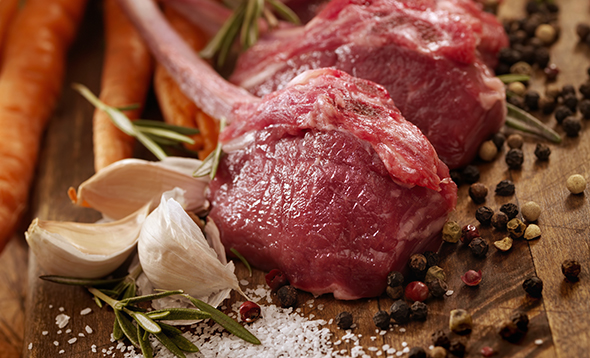That organic living is a conscious health choice
A Cut above the Rest
The jury is still out on exactly which diet is the healthiest one. Current sentiment gravitates towards two seemingly polar opposites: the pro-meat paleolithic or caveman diet; and the pro-vegetable alkaline diet. While there are various pros and cons to each diet, ultimately, we believe in moderation in consumption, and in keeping your diet well balanced. We all know the nutritional benefits of fruits and vegetables, but red meat (beef, lamb and pork) is also an important source of a wide range of nutrients that are vital to our bodily functions. It contains a significant amount of protein that is crucial for the function of muscles and bones, and is one of the best sources of B vitamins, especially B12 (it helps to maintain nerve cells and aids normal blood formation), which cannot be derived from plant sources. Having some red meat in your diet can also help prevent zinc and iron deficiencies. Zinc is important for a healthy immune system while iron helps generate blood cells. For subscribers of the alkaline diet, balance the acidic effect of meats by pairing each portion with three servings of vegetables.
Having said that, it’s important to understand the differences between each kind of red meat, as well as the impact that the quality of the red meat you choose to eat has on its nutritional value. Lamb, for example, is one of the fattiest meats. The leanest cuts of lamb are twice as fatty as that of beef equivalents, but it is an easily absorbed source of iron. Leaner cuts of beef—such as a sirloin rather than rib eye or T-bone—are low in fat; as is lean pork, which is almost as low in fat as chicken and is the leanest red meat. But beef comes up tops when it comes to nutrition and is a healthy protein choice when eaten in moderation.
While meat allergies are uncommon, beef is most likely to cause an allergic reaction, especially among people who are also allergic to cow’s milk. In contrast, lamb is considered hypoallergenic and a good meat to introduce into babies’ diets. But whichever meat you opt to include in your daily meals, the most important consideration has to be whether it is organic. Organically raised animals are not fed antibiotics or artificial and growth hormones. They cannot be genetically modified and cannot eat genetically modified foods. Eating organic meat reduces your exposure to pesticides and chemicals that tend to end up in animal fat. It is also more nutritious. Always choose grass fed meat over grain fed as it contains higher levels of omega-3 fatty acids and conjugated linoleic acid.
After you’ve taken all these factors into consideration, the remaining challenge lies in selecting the right cut of meat and learning how it should best be cooked. The general rule of thumb is simple: tougher cuts of meat with a good deal of connective tissue are best used for making slow-cooked, braised dishes like stews and pot roasts. These include chuck, brisket, plate, shank and round cuts in beef; neck, shoulder, breast, shank, flank and leg in lamb; and butt (neck, shoulder and upper arm), trotter, ham hock, belly and spareribs in pork. For roasts, select rib cuts such as beef prime rib, rack of lamb, baby-back pork ribs and pork spare ribs. These also benefit from slow roasting in the oven or on the grill. In addition, lamb shoulder and leg of lamb, pork butt, whole pork loin and pork belly make for excellent roasts, too.
Beefsteak cuts such as T-bone, Porterhouse, strip loin steaks are best cooked in the pan or seared and finished in a hot oven. While leaner cuts such as beef tenderloin, lamb loin and pork sirloin or loin can be grilled, broiled or sliced thinly and stir-fried.
Getting the very best out of each cut of meat really comes down to pairing it with the right cooking technique. Once you master this, you’ll come to realise that coaxing the best flavours and texture out of a piece of meat is relatively simple yet remarkably rewarding and extremely nutritious.
Organic beef, lamb and pork are available at SuperNature Forum and online.


























_1672804154.jpg)

_1611290459.jpg)